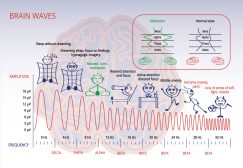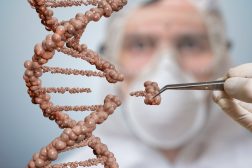Definition
noun
High-density lipoprotein carrying a cholesterol molecule at its center
Supplement
A lipoprotein is an assembly of lipids and proteins. Lipoproteins transport fat molecules around the body. One of the major types of lipoproteins is the so-called HDLs or the high-density lipoproteins. HDLs take excess fat molecules (such as cholesterol, phospholipids, and triglycerides) from cells. Thus, high-density lipoprotein cholesterol pertains to HDLs that carry excess cholesterol from cells and move the cholesterol to the liver for processing. HDLs also remove cholesterol molecules from the walls of blood vessels. This is why HDL cholesterol is sometimes referred to as the good cholesterol. HDL cholesterol carries the excess cholesterol back to the liver for processing. The higher HDL cholesterol level the more cholesterol is presumed to being removed from sites that otherwise may lead to health risks, such as cardiovascular diseases. HDL level that is below 40 mg/dL is considered too low.1 Low levels of HDL may mean an increased risk for heart diseases. A high HDL cholesterol level is one that is greater than 60 mg/dL. 2
Abbreviation / Acronym: HDL cholesterol
Also called:
- good cholesterol
Compare:
See also:
- cholesterol
- lipoprotein
- fat
- lipid
Reference(s):
1 Fogoros, R. N. (2014). “HDL Cholesterol.” Retrieved from http://heartdisease.about.com/od/cholesteroltriglyceride1/g/Hdl-Cholesterol.htm
2 “HDL Cholesterol: The Good Cholesterol.” Retrieved from http://www.webmd.com/cholesterol-management/hdl-cholesterol-the-good-cholesterol







